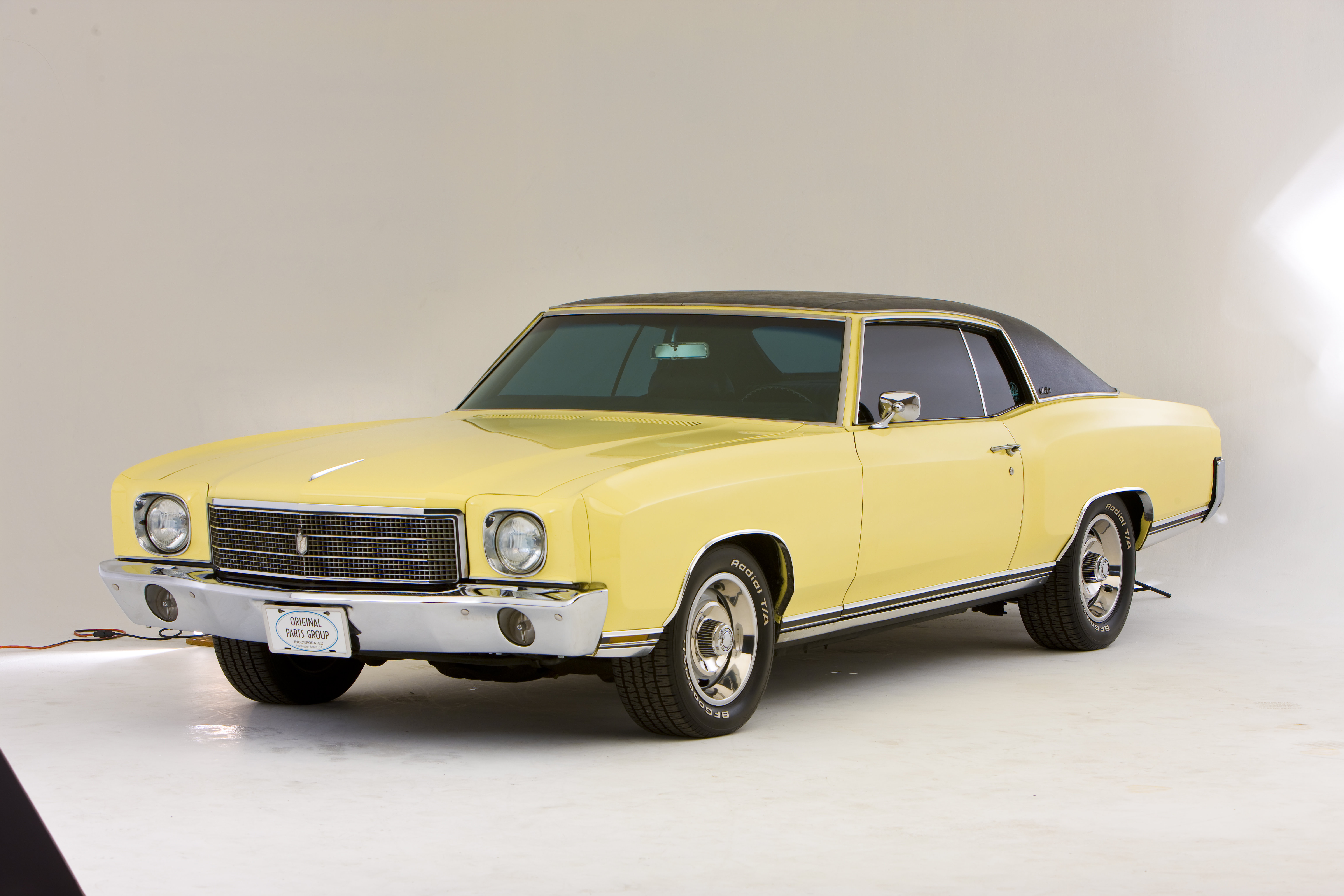-
Posts
1,070 -
Joined
-
Last visited
-
Days Won
19
Content Type
Profiles
Articles
Forums
Gallery
Events
Everything posted by Mo's70MCs
-
I'm still puzzled cause the source of the leak is kind of important and could have alot more relevance than you think.. I somehow suspect a converter or xmsn problem! I can't see the motor behaving that way? keep us posted? Rod
-
trouble shifting and white smoke? I would relate that to maybe and usually a xmsn modulator, often when they blow they start sucking fld right up the hose into the intake manifold, I'm sure the timming issue could be checked without tearing into it! If it jumped a tooth in timing I'm sure you would have known about it. You'll see fld dripping out of the modulator if you unplug the hose. Rod
-
That sleek appearance! what else? Rod
-
Have you checked the condition of flex plate, I've seen them crack in the area where they bolt up to the crank, the wierd relation to the starter and fld leak?.. kind of lead me in the direction of the bellhousing, starting noise kind of weird though, when you say the starter is making noise.. do you mean it's laboring or bendix drive engagement misaligned? Usually alot of the crappy stater rebuild castings have alot to be desired and in some cases you may require some shims for proper engagement, unless the flex plate comes appart or it begins to crack, the difficulty of it not going into park.. that maybe a linkage problem did that just start-up? who rebuild the motor?, did you have the tranny rebuild, I suspect something broken or loose in the area where the engine and tranny meet? Keep us posted with results? Rod
-
Ed, can you post a picture? Rod
-
Ed, what's up are you out there? Rod
-
Cool on the definiton of alodine and makes for a good read! Kinda refreshes the old noggin, because I forgot to mention the staining capabilities of the "Alodine" process.. it required a quick rising right after you stain the surface! I could see it working wonders if you?.. prep the surface! dip the entire grille, quickly dip it again in a water bath? The way it was used primarily; pretty much on small scale and only the surface of the item, where the amount of alodine needed not on large scale.. I mean small amout (1gal) would probably treat the entire surface of a car if it were made of aluminum. I think the process was done because most of the time sanding the surface of Alclad would require reprotecting the surface of the metal, although aluminum is wonderful corrosion-resistant alloy it's not impervious to the elements? Including Riffraff! Rod
-
Wallaby, I remember while working for Mcdonnell/Douglas, and working with untreated 2024 aluminum which corrodes in less than 24 hours if left untreated, using (alodine) a chemical application of a protective chromate. Usually used on small parts that required surface protection after working or sanding, don't now if it will work on Zinc Die- Casting (pot metal) How about using this! Pot Metal Primer. link Rod
-
Still on the look-out! Hope you find it my friend, good luck..Ed don't give up! Rod
-
Lead served a dual purpose as a gas additive: -It was a cheap way to increase octane rating -It coated nicely the inside of the cylinders, reducing wear. Of course, Tetra-ethyl lead is toxic, to the environment in general, and to people, including you and me. E.P.A. Fact sheet: Leaded Gas Phaseout Air Quality Fact Sheet June, 1995 Leaded gasoline will no longer be available in the United States after December 31, 1995. The Clean Air Act Amendments of 1990 mandate the elimination of lead from all U.S. motor fuel by January 1, 1996. This represents the final step in a gradual reduction of lead in gasoline since the early 1970s. "Regular" gasoline typically contained approximately 4.0 grams of lead per gallon; average lead content was reduced to 0.5 gram/gallon in 1985, and still further to 0.1 gram/gallon in 1986. "Unleaded gasoline" is allowed to contain no more than 5/100ths of a gram of lead per gallon. Why remove lead from gasoline? Lead is extremely toxic. Studies show that exposure to high concentrations of lead, particularly in young children, can result in damage to the central nervous system, and may be associated with high blood pressure in adults. Human exposure to lead typically occurs via inhalation of air and ingestion of lead in food, soil, water or dust. Airborne lead concentrations throughout the country have decreased 89 percent since 1984, directly due to the phaseout of leaded gasoline, as well as to the majority of cars equipped with pollution control devices that require using unleaded fuel. How will unleaded gasoline affect my older car's performance? A basic rule of thumb for refueling a pre-1971 vehicle is to use unleaded gasoline with the same octane rating as the previously-used leaded gas. Under normal driving conditions, the use of unleaded fuel should not cause any problems with the vehicle's performance. Pre-1971 engines were equipped with "soft" valve seats and leaded gasoline acted as a lubricant to prevent excessive wear of the valve seats. Using these engines with unleaded fuel in high-speed/high-load situations could result in some valve seat wear. (Boats, some farm equipment, and tow vehicles may be included in this category.) Substitute lubricant additives are available at auto supply stores to help this situation. In addition, valve seats are usually replaced with at the time an older engine is rebuilt. If you are concerned about your particular application, check with your engine manufacturer. Does this mean my engine will wear out sooner without the protection of lead? No. In fact, unleaded fuel can help extend maintenance intervals. In the past, lead deposits on spark plugs were the main reason to change them so often. Today's cars are built with pollution control equipment that is specifically designed to run on unleaded gas. So I guess they had us believing that we've been filling our cars with unleaded fuel. Rod
-
Ed, any news on the Monte? As promised I have my peepers wide open and on the look out! Rod
-
Turning the adjusting screw CCW will remove preload on the diaphragm and shifts will occurr at a lower mph / rpm. Turning the adjusting screw CW will add more preload and cause the shift points to occurr at higher rpm / mph. Start by making small changes in the direction you wish to go with. The overall difference between the high and low range of adjustment will only be a few MPH so don't be looking for monster changes just adjusting the modulator. On a non adjustable modulator it is sometimes possible to adjust them "down" by shimming the modulator where it enters the trans and "up" by using a slightly longer pin or rod. Another thing I'de look into is detent cable adjusment, to get decent results. Rod
-
Try this: link Rod
-
Correct me if I'm wrong! But were'nt those exclusively on 70's only? Rod
-
Let's not forget the xmsn lines, those should be checked closely as well! i.e. loose fittings, but I'll agree a worn torque convertor, where the seal does not seat well (worn groove in it) will allow fld seepage and or crack in it. Rod
-
Jim, check this out! http://www.upholster.com/auto/headliners-installation.html Another thing I recommend is to have a heat gun handy, you could use a hair dryer..or lay the headliner in the sun, to work the wrinkles out! I used a heat gun worked great for me..kind of like drying hair, do'nt keep the heat on one spot too long, plus it tightens the headliner quite well. Rod
-
Spencer, I don't think you seem to understand, that your Monte Carlo with a TH350 will not shift (3) three times, because it will shift (automatically) only twice! It will begin in (D)(first forward gear where you place your car in) for it to move forward, it'll proceed into (2nd) forward gear and shift finally to (3rd) foward gear! Therfore only shifting twice. Don't get upset if you can't get it to shift three times because, it wont. Rod
-
Spencer, I'm comfused, you're saying that while in drive the xmsn will not up-shift to third..correct me if I'm wrong but it should shift only twice..I don't think while in drive it'll shift 3 times,unless you're saying that.. you can't manually shift it!! Rod
-
REMEMBER" 727 ARE THE LAST THREE" I doubt it being on the west coast,but you'll never know!! I'll keep my eyes open as well. Rod
-
I sencond that!!"It could have been the torque wrench operator" Or you could just apply "Alabama torque".
-
Ufcguy, the noise that you speak of!..have you considered checking to see if the bendix drive in the stater motor is hanging(partially engaged)on the flywheel!! Sometimes the spring in the stater solenoid weakens and does not return the drive all the way,a careful inspection under the car while it's running can tell you alot!! That type of noise is most prevalent at idle and it goes away as you increase rpm's Rod
-
Ufcguy, I would surely like to help,but your noise might be hard to diagnose thru a tech forum! I live in Norwalk,where do you live?..perhaps I can be of help If you would like to meet,and I can listen to your noise up close? Not a big deal!! Rod
-
Drive that FGMC with pride with its' stock wheels and be proud that you have the good taste to be driving such a fine classic. Rob,I could'nt have said it better myself,our Montes are part of the elite. Rod
-
Danny, I've always used a ph13 myself as I understand it a ph30/1/2qt,ph13/1qt.As far as ph5 I dont know if the application is correct check this link . LINK
-
just in plain sight? Rod


